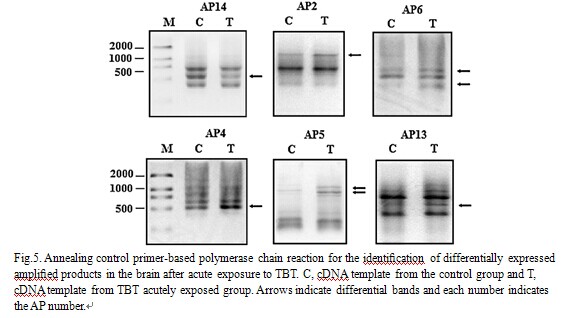Li B.W., Wang C.G., Yu A, Chen Y.X., Zuo Z.H*.Aquatic Toxicology, 2010, 99:248-255.
Tributyltin (TBT), a ubiquitousmarine environmental contaminant, has been reported to affect functioning of the central nervous system.However, themechanismof its neurotoxicity remains unknown. In this study, an Anneal Control Primer-differential display Reverse Transcription-PCR method was employed to investigate differentially expressed genes in the brain of Sebastiscus marmoratus in response to acute TBT exposure. A total of 18 gene sequenceswere identified as having the potential for being differentially expressed, of which 9 could be identified with homologous database sequences. The expression profiles of 4 genes, namely cytochrome c oxidase subunit II, GRB2-associated binding protein 2, adaptor-related protein complex 2, and guanine nucleotide exchange factor p532, were analyzed in the brain using real time fluorescence quantitative PCR after treatment with 10, 100 and 1000 ng/L of TBT for 50 days. The results showed that chronic exposure to TBT induced down-regulation of these genes in a dose dependent manner. The present study provided a basis for studying the response of fish to TBT exposure and allowed the characterization of new potential neurotoxic biomarkers of TBT contamination in seawater.


